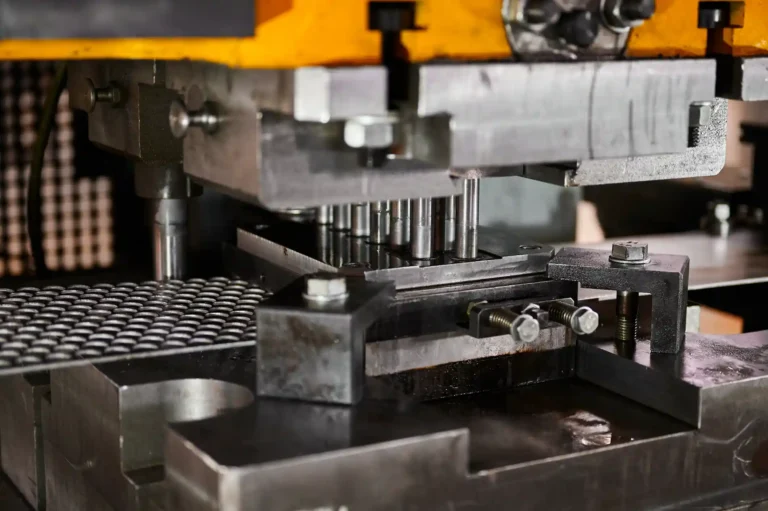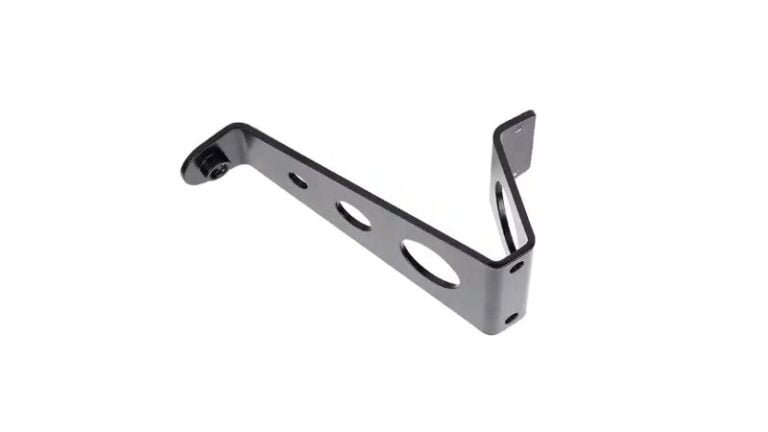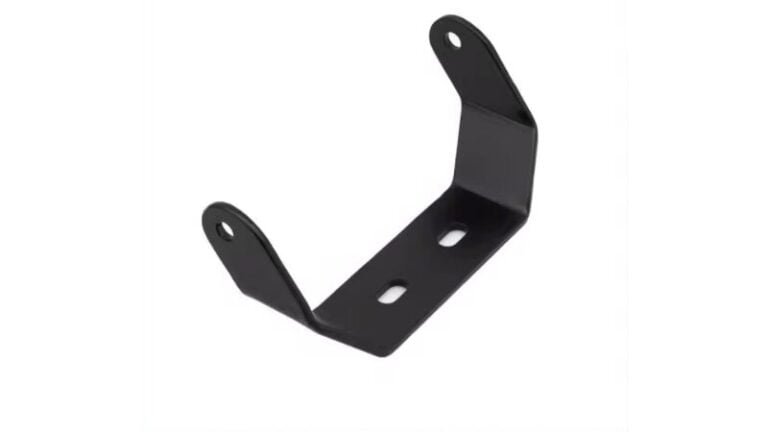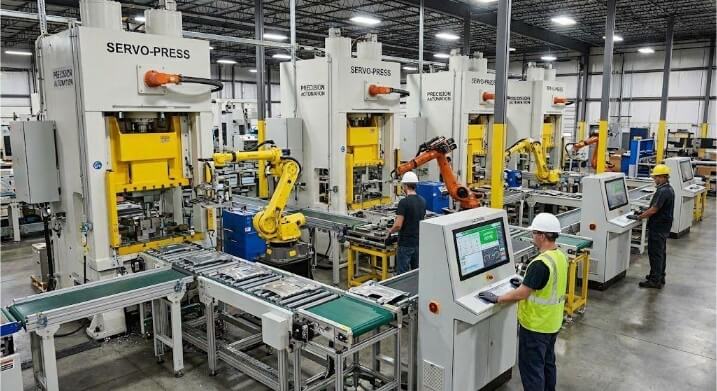Short run stamping can feel like a challenge. You don’t need thousands of parts, but you still want strong quality, fast turnaround, and good pricing. Mass production just isn’t a fit. And traditional machining? It takes too long and costs too much. You need something flexible, efficient, and cost-effective—for just a few hundred or a few thousand pieces. That’s where short run stamping steps in.
Short run stamping fills the gap between prototype and full production. Let’s break down what it is, how it works, and why it matters.

What is Short Run Stamping?
Short run stamping is a process used to shape metal parts by pressing metal sheets between a die and a punch. This method is ideal for producing a smaller number of parts, typically ranging from a few hundred to a few thousand. It is a cost-effective option compared to high-volume stamping, which requires complex and expensive dies.
The process is quick, allowing for shorter lead times. It also offers flexibility, making it easier to adjust designs than with mass production methods. Parts made through short run stamping are durable and precise. This makes it a great choice for testing designs or creating custom components.
Short Run Stamping Process: Step-by-Step
Short run stamping involves several key steps that make it an efficient way to produce small batches of metal parts. Here’s how it works:
Step 1:Design and Tooling Preparation
The process starts with designing the part and making the necessary tools (die and punch). Unlike large-scale production, short run stamping uses simpler tools to keep costs low. The tools are made quickly, allowing for faster setup.
Step:2:Material Selection
After the tools are ready, the right metal sheet material is chosen. Steel, aluminum, or brass are common choices depending on the part’s use.
Step 3:Stamping
The metal sheet is fed into the stamping press, where the die and punch shape the metal. The press applies high pressure to cut or form the metal into the desired shape.
Step 4:Inspection and Quality Control
After stamping, the parts go through a quality check. This ensures that each part meets the required size and specifications.
Step 5:Finishing and Packaging
Finally, the stamped parts are cleaned, finished, and prepared for delivery. Once finished, the parts are packaged and ready for use in production or assembly.

Materials Used in Short Run Stamping
Choosing the right material for short run stamping is key to achieving the desired strength, weight, and cost for the parts. Here’s a breakdown of some common materials used in the process:
Steel
Steel is one of the most widely used materials in short run stamping. It offers a strong balance of strength and flexibility, making it suitable for many different applications.
Aluminum
Aluminum is a lightweight material that’s easy to stamp and resistant to corrosion. Aluminum alloys are favored for their good workability and strong strength-to-weight ratio.
Stainless Steel
Stainless steel is known for its high resistance to corrosion, heat, and stains. It’s a tougher material to stamp than mild steel due to its higher strength, but it’s essential when durability and reliability are critical.
Copper and Brass
Copper and brass alloys are used in stamping for applications that require excellent electrical conductivity and corrosion resistance. Copper is often chosen for electrical connectors, heat exchangers, and parts in electronics, due to its ability to conduct electricity.
Types of Stamping Dies
The type of die used in short run stamping affects the efficiency, cost, and quality of the parts. Here are the most common types of stamping dies.
Single-Stage Dies
Single-stage dies are the simplest type. They perform one operation at a time, like cutting, punching, or forming. This makes them ideal for parts with simple shapes or when only a few operations are needed.
Multi-Stage Dies
Multi-stage dies to handle several operations in a single press cycle. They combine processes like punching, bending, and trimming, all in one stroke. These dies are used when parts need multiple processes to reach their final shape.
Progressive Dies
Progressive dies are used for high-volume production. They are ideal for parts that require several operations. In this process, the material is fed through a series of stations, each performing a different task in sequence. This allows for continuous production without removing the parts between stages.
Advantages of Short Run Stamping
Short-run stamping offers several key benefits that make it an ideal choice for small to medium-production runs. Here’s why short run stamping is a smart choice:
Speed and Efficiency
Once the die is created, stamping can produce parts in large quantities in a short amount of time. This fast-paced production allows you to meet tight deadlines and keep your project moving forward efficiently.
Cost-Effectiveness for Low-Volume Production
Short run stamping is more affordable than mass-production methods for low-volume orders. It uses simpler, faster molds, which reduces costs.
Flexibility in Design and Customization
Short run stamping offers a high level of flexibility in terms of design and customization. Because tooling is quicker and less expensive to produce, it’s easier to make changes to the design without significant cost increases.
Reduced Lead Times
With short run stamping, lead times are generally shorter compared to other production techniques. Once the tooling is ready, parts can be stamped quickly and efficiently, reducing the overall time to get parts to market.
Precision and Consistency in Parts
Despite being used for low-volume runs, short run stamping produces parts with high precision and consistency. The use of dies ensures that each part is shaped to the same specifications, minimizing variations and defects.

Applications of Short Run Stamping
Short run stamping is used in many industries to create both functional and decorative parts. Let’s look at some key industries that benefit from this method.
Automotive Industry
In the automotive industry, short run stamping is often used to make custom parts, prototypes, and small-batch components. Parts like brackets, enclosures, and trim pieces are efficiently produced using this method.
Electronics Industry
Short run stamping is commonly used in the electronics industry to create parts like connectors, enclosures, and circuit boards. The need for precise, high-quality parts that are lightweight yet durable makes stamping an ideal method.
Aerospace Industry
The aerospace industry requires parts that are strong, lightweight, and able to handle extreme conditions. Short run stamping is used to produce critical components like brackets, housings, and structural parts in smaller quantities.
Medical Device Manufacturing
In medical device manufacturing, short run stamping is crucial for making custom parts with high precision and reliability. This method is used to produce surgical tools, medical instrument housings, and implants.
Consumer Products and Packaging
Short run stamping is also used in the production of consumer products and packaging. It allows manufacturers to create custom packaging, product enclosures, or decorative components.
Comparing Short Run vs Long Run Metal Stamping
When choosing between short run and long run metal stamping, it’s important to consider the cost, production speed, and suitability for different project sizes. Here’s a comparison to help you pick the right option for your needs.
| Aspect | Short Run Stamping | Long Run Stamping |
|---|---|---|
| Cost Differences | More cost-effective for small volumes, lower tooling costs. | More cost-effective for large volumes, higher tooling costs. |
| Setup and Tooling Time | Minimal setup time, quicker tooling production. | Longer setup time, complex tooling setup. |
| Production Volume and Speed | Ideal for low to medium volumes (hundreds to thousands). | Best for high volumes (thousands to millions), faster production speed. |
| Flexibility and Design Changes | Greater flexibility, easy design changes without high costs. | Less flexible, costly to change design during production. |
| Precision and Quality | High precision, but slight variations with frequent tooling changes. | Consistent high quality and precision, uniformity across large batches. |
Conclusion
Short run stamping is a highly efficient and cost-effective method for producing small to medium quantities of metal parts. It offers flexibility, speed, and precision, making it ideal for industries like automotive, electronics, aerospace, and medical devices. Whether you need prototypes, custom parts, or limited production runs, short run stamping ensures high-quality results with reduced lead times.
Ready to start your next project? Contact us today for a free consultation and get high-quality, cost-effective stamped parts delivered on time!
Hey, I'm Kevin Lee

For the past 10 years, I’ve been immersed in various forms of sheet metal fabrication, sharing cool insights here from my experiences across diverse workshops.
Get in touch

Kevin Lee
I have over ten years of professional experience in sheet metal fabrication, specializing in laser cutting, bending, welding, and surface treatment techniques. As the Technical Director at Shengen, I am committed to solving complex manufacturing challenges and driving innovation and quality in each project.




